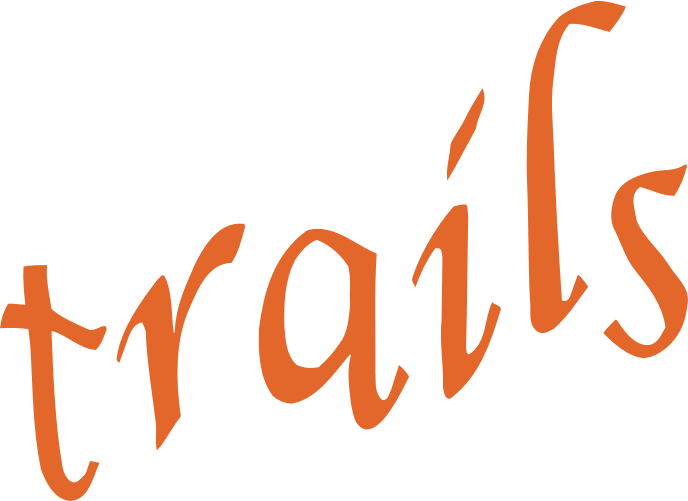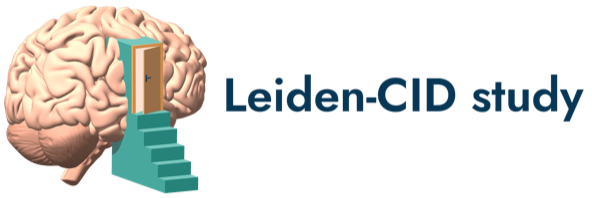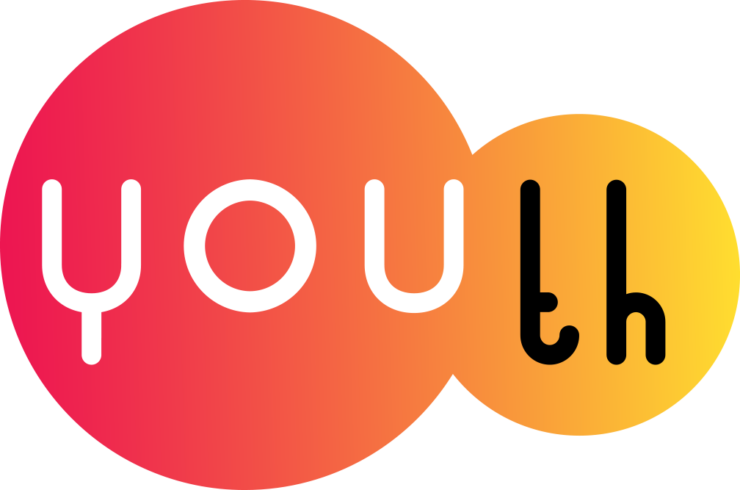-
measure Revisie Amsterdamse Kinder Intelligentie Test (RAKIT)
Study: Netherlands Twin Register Mode of collection: MeasurementsAndTests Behavioral/cognitive task Available measurements: Young Netherlands Twin Register YE_ATTEF1 YE_COG10The Revisie Amsterdamse Kinder Intelligentie Test (RAKIT) assesses intelligence quotient (IQ) in children between 4 and 11 years old.Created October 17, 2024 • Updated October 20, 2024 -
measure Amsterdam Neuropsychological Tasks (ANT)
Study: Netherlands Twin Register Mode of collection: MeasurementsAndTests Behavioral/cognitive task Available measurements: Young Netherlands Twin Register YE_ATTEF1 YE_ATTEF2The Amsterdam Neuropsychological Tasks (ANT) are computerized executive functioning tasks. The ANTs measure a diverse range of executive functions, including attention, working memory, and inhibition.Created October 17, 2024 • Updated October 20, 2024 -
measure Language and stuttering
Study: Netherlands Twin Register Mode of collection: SelfAdministeredQuestionnaire Available measurements: Young Netherlands Twin Register YS_2 YS_5 YS_7 YS_10 YS_12 YS_DHBQP YS_DHBQ14 YS_DHBQ16 YS_DHBQ18 YC_BS2Language development and stuttering contains questions about the child's speech development and the parent's and child's stuttering. Questions include, for example, "Have you ever stuttered?", "Did the stuttering bother you?", "Has your child ever stuttered?", "Does the child slowly repeat a sound from a sentence?", and "Does the child prolong a sound...Created October 17, 2024 • Updated October 20, 2024 -
measure Language Development Survey (LDS)
Study: Generation R Mode of collection: SelfAdministeredQuestionnaire Available measurements: Generation R 2.5 yearsThe Language Development Survey (LDS) assesses receptive and expressive language development. It is a 310-word vocabulary checklist, e.g., ‘Apple’ and ‘Tortoise’, with words arranged within 14 semantic categories. Parents are asked to identify the words that the child uses spontaneously.Created October 17, 2024 • Updated October 20, 2024 -
measure Forward Color Recall Task
Study: Generation R Mode of collection: MeasurementsAndTests Behavioral/cognitive task Available measurements: Generation R 4 yearsThe Forward Color Recall task assesses short-term memory in 8 test trials, of which 4 sections are repeated twice. In the task, the child is presented with two circles of colors, and then has to identify the color from a five-color wheel. The test stops if the child fails a trial twice. The total error score can vary between 0 and 8.Created October 17, 2024 • Updated October 20, 2024 -
measure Raven's Progressive Matrices Test (RPM) - set I
Study: Generation R Mode of collection: MeasurementsAndTests Behavioral/cognitive task Available measurements: Generation R 5-6 yearsRaven's Progressive Matrices (often referred to simply as Raven's Matrices or RPM) is a non-verbal test used to measure general intelligence and abstract reasoning. It is one of the most common tests administered to both groups and individuals ranging from 5-years-olds to the elderly. It consists of 60 multiple choice questions, listed in order of...Created October 17, 2024 • Updated October 20, 2024 -
measure Snijders-Oomen Niet-verbale Intelligentie Test 2.5-7 jaar revisie (SON-R 2.5-7)
Study: Generation R Mode of collection: MeasurementsAndTests Behavioral/cognitive task Available measurements: Generation R 5-6 yearsThe Snijders-Oomen Niet-verbale Intelligentie Test 2.5-7 jaar revisie (SON-R 2.5-7) is a test battery that assesses intelligence in young children without the need to use language. It consists of the subtest puzzles, categories, patterns, situations, mosaics and analogies, which together assess abstract reasoning and spatial insight abilities.Created October 17, 2024 • Updated October 20, 2024 -
measure Behavior Rating Inventory of Executive Function (BRIEF)
Study: Generation R Mode of collection: SelfAdministeredQuestionnaire Available measurements: Generation R 4 years 13-14 yearsThe Brief Rating Inventory of Executive Function (BRIEF) assesses parent-reported executive functions related to inhibition, shifting, emotional control, working memory and planning in children in everyday life. The BRIEF consists of 86 items that form eight subscales: Inhibit (10 items), Working memory (10 items), Shift (8 items), Emotional control (10...Created October 17, 2024 • Updated October 20, 2024 -
measure Parent Report Children's Abilities (PARCA) - abbreviated version
Study: Generation R Mode of collection: SelfAdministeredQuestionnaire MeasurementsAndTests Behavioral/cognitive task Available measurements: Generation R 2 years 2.5 yearsThe Parent Report of Children's Abilities (PARCA) is a questionnaire used to assess the developmental progress in areas such as communication, socialization, self-help skills, and cognitive abilities of children aged 1-4 years. Parents received a questionnaire with 9 wooden cubes to administer several playful tasks with their child. The PARCA consists of...Created October 17, 2024 • Updated October 20, 2024 -
measure Auditory Continuous Performance Test for Preschoolers (ACPT-P)
Study: Generation R Mode of collection: MeasurementsAndTests Behavioral/cognitive task Available measurements: Generation R 4 yearsThe Auditory Continuous Performance Test for Preschoolers (ACPT-P) is a tool used to assess the auditory attention and sustained attention abilities of preschool-aged children. It involves a series of auditory stimuli presented to the child, and the child is required to respond to specific target stimuli, and repress their response for others (go-no go).Created October 17, 2024 • Updated October 20, 2024 -
measure Language Tests for Children (Taaltest voor kinderen)
Study: Generation R Mode of collection: MeasurementsAndTests Behavioral/cognitive task Available measurements: Generation R 5-6 yearsTaaltest voor Kinderen (TvK) is a Dutch battery that aims to test language proficiency in children. Its subtests encompass receptive and productive language proficiency in terms of phonology, morphology, syntax and semantics.Created October 17, 2024 • Updated October 20, 2024 -
measure Childhood Executive Functioning Inventory (CHEXI)
Study: TRAILS Mode of collection: SelfAdministeredQuestionnaire Available measurements: The Next Generation NEXT - T4 NEXT - T5The Childhood Executive Functioning Inventory (CHEXI) is a validated assessment of executive functioning. It includes items on reported inhibition, regulation, working memory, and planning.Created October 17, 2024 • Updated October 20, 2024 -
measure Wechsler Preschool and Primary Scale of Intelligence (WPPSI)
Study: L-CID Mode of collection: MeasurementsAndTests Behavioral/cognitive task Available measurements: Early Childhood Cohort ECC - T2 ECC - T3 ECC - T4The Wechsler Preschool and Primary Scale of Intelligence (WPPSI) is an IQ test for children 2.5 to 7.25 years of age to determine general intelligence. It uses subtests to determine a child's Verbal and Performance IQ scores, as well as processing speed.Created October 17, 2024 • Updated October 20, 2024 -
measure Stop-Signal Task - Cars
Study: L-CID Mode of collection: MeasurementsAndTests Behavioral/cognitive task Available measurements: Early Childhood Cohort ECC - T1 ECC - T2 ECC - T3 ECC - T4The Stop-Signal Task - Cars aims to measure behavioral inhibition by having the child inhibit their reaction in response to a quickly appearing signal. During the task, the child is instructed to touch a picture of a car appearing on the screen as quickly as possible, and to withhold touching the screen when a "Stop" sign appears. The child has to respond...Created October 17, 2024 • Updated October 20, 2024 -
measure Gaze Cueing experiment
Study: YOUth Mode of collection: MeasurementsAndTests Eyetracking Available measurements: Baby and Child 5 months 10 months 3 years 6 years
Child and Adolescent 9 years 12 yearsThe Gaze Cuing experiment is an eye-tracking task that measures a participant's sensitivity to another person's gaze direction as a possible cue to predict the location of a next event. Sensitivity to gaze direction is taken as a marker of social competence. In the Social Gaze Task, children see a face with direct gaze, followed by an eye gaze shift to...Created October 17, 2024 • Updated October 20, 2024 -
measure Clinical Evaluation of Language Fundamentals (CELF) - Pragmatics
Study: YOUth Mode of collection: SelfAdministeredQuestionnaire Available measurements: Baby and Child 3 years 6 years
Child and Adolescent 9 years 12 yearsThe Clinical Evaluation of Language Fundamentals (CELF) was designed to assess general language ability and specific language domains, and screen for language disorders in children and youth between 5 and 18 years. The Preschool version is meant for toddlers between 3 and 6 years old. The CELF consists of many subscales, such as Concepts and Following...Created October 17, 2024 • Updated October 20, 2024 -
measure Child Gap Overlap Task - Antisaccade
Study: YOUth Mode of collection: MeasurementsAndTests Eyetracking Available measurements: Baby and Child 6 years
Child and Adolescent 9 years 12 yearsThe Gap-overlap task is a gaze contingent paradigm that measures visual attention shifting between a central and a peripheral stimulus. This is thought to be a key process underlying behavioral control. The Gap-overlap task contains three conditions; i) Gap, in which the central stimulus disappears 200ms before the appearance of the peripheral target; ii)...Created October 17, 2024 • Updated October 20, 2024 -
measure Wechsler Preschool and Primary Scale of Intelligence (WPPSI-III-NL)
Study: YOUth Mode of collection: MeasurementsAndTests Behavioral/cognitive task Available measurements: Baby and Child 6 yearsThe Wechsler Preschool and Primary Scale of Intelligence (WPPSI) is an IQ test for children 2.5 to 7.25 years of age to determine general intelligence. It uses subtests to determine a child's Verbal and Performance IQ scores, as well as processing speed.Created October 17, 2024 • Updated October 20, 2024 -
measure Child Gap Overlap Task - Prosaccade
Study: YOUth Mode of collection: MeasurementsAndTests Eyetracking Available measurements: Baby and Child 6 years
Child and Adolescent 9 years 12 yearsThe Gap-overlap task is a gaze contingent paradigm that measures visual attention shifting between a central and a peripheral stimulus. This is thought to be a key process underlying behavioral control. The Gap-overlap task contains three conditions; i) Gap, in which the central stimulus disappears 200ms before the appearance of the peripheral target; ii)...Created October 17, 2024 • Updated October 20, 2024 -
measure EEG Face House
Study: YOUth Mode of collection: MeasurementsAndTests EEG Available measurements: Baby and Child 5 months 10 months 3 years 6 yearsIn the Face-House task, infants or children up to the age of 6 passively watch pictures of faces with a neutral expression (12 faces repeated four times) and pictures of typical Dutch houses (also 12 x 4) while their Electrocardiography (EEG) is measured. This task lasts approximately 3-4 minutes.Created October 17, 2024 • Updated October 20, 2024





